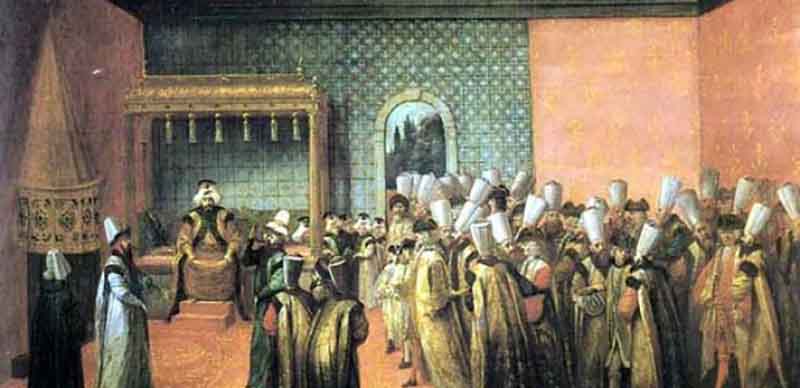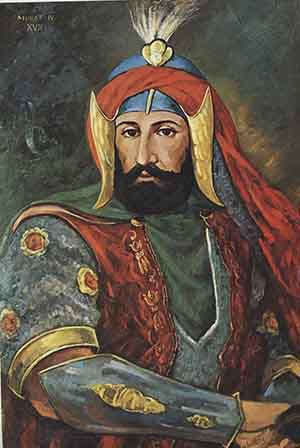I seem to hear that many who read the title smile and say, “Would it be candy’s policy?”. However, if the subject is Ottoman and Ancestry, each word carries a different meaning and is selected carefully. Especially, during the bairam days we remember the rock candy (akide şekeri), and now it has a nostalgic value. It will attract your attention both with its appearance and taste as well as with its history.
The Rock Candy is the Contract Candy
The Ottoman Empire was a system with rules and could be deemed as democratic. In the Ottoman Empire, the Guild of Janissaries of the Sultan’s army is composed of devshirmehs (Christians conscripted to bring up for the janissaries). All the orders of the Janissaries are determined quite differently and connected to strict rules. In the Guild of Janissaries that feed from the tradition of Bektashism, the procedure and convention also perform differently. To please the Padishah as well as the Janissary, the most important armed force of the government, various activities were organized.
The Janissaries who work as mercenary soldiers take “ulufe” which is a salary given 4 times in a year. The date for distributing the salaries are usually expected during the bairam season. During the Bairam ceremonies at the Palace, a meal is offered to the Janissaries along with distribution of ulufe. During the activity, called “çanak yağması” (bowl plunder), the western ambassadors who visit Istanbul at that time also take place in the protocol.
At this time, the Janissaries inform the Sultan in a different way whether they are satisfied with their salaries and the rights offered to them. If the Janissaries do not eat the offered meal, this means dissatisfaction, and in that case they take down the cooking boiler and the rebellion starts. The idiom for Rocking the Boat (“kazan kaldırmak”) by the Janissaries comes from this period. Further, a different ritual indicating whether there is trust between the Janissary Corps and the Sultan is led. At the end of the meal, the chief of the Janissaries offers candy to the Sultan.
The candy that is offered by the chief of the Janissaries to the Sultan shall be exactly 400 gr. If there is candy less than 400 gr in the candy bowl, this means that the Janissary Corps does not trust the Sultan. If the Sultan takes and eats the candy offered in the bowl, this means that the Sultan trusts the Janissary Corps. Correspondingly, the rock candy undertakes the duty of being a fine line determining the trust between the Sultan and the Janissaries.
Murat IV and the Rock Candy
The tradition of rock candy was carried to another level at the ceremony of accession to the throne of Murat IV. The Janissary Corps, especially the chief of the Janissaries, did not trust Sultan Murat, who acceded to the throne at a young age. So, candy in 350 gr is offered to the Sultan at the ceremony of accession to the throne of Sultan Murat. When the Sultan sees that the candy is weighted as 350 gr, first he draws a thick line with a red pencil in the middle of the candy bowl, then takes the candy and eats. This is the first time that such an event has occurred. The meaning is that: You, the Janissary Corps, show that you do not trust me by offering candy in 350 gr but I trust you so I eat the candy. However, the red line in the middle of the bowl that I draw carries the meaning that everybody, including you, the Janissaries, shall know your limits. Thus, Murat IV, at the very young age, gives a great lesson to the Janissary Corps; and later at that age he proves the excursions of Baghdad and Revan are not a coincidence.
The Rock Candy Nowadays
When we look from the historical perspective, the rock candy is a reflection of the very tense moments between the Sultan and the Janissary. In present day, the rock candy is still indispensable for bairams in terms of both its taste and appearance. The rock candy, which was initiated as the Janissary tradition, eventually was produced in the candy bazaar and sold to the public. The candy passes through some phases such as crushing in a mortar, cooking in a wood fire and melting in copper boilers. Finally, it is poured into a marble floor and left to be cooled. Prior to the presentation, the natural sweeteners and colorants are used. Some plants and fruits are preferred, such as cherry, rose, rose water, bergamot, orange, lemon, cinnamon, mint etc. Following these fairly tedious phases, the rock candy that made the padishahs quiver in a period in the past, gets ready for the sale.



